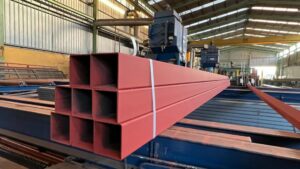
Russian steel demand is expected to rebound to 2019 levels and slightly above in a V-shape recovery in 2021. So said Dmitriy Kolomytsyn, NLMK’s IR and capital markets director, at the OECD’s 88th Steel Committee session, on behalf of the Russian Steel Association, of which NLMK is a member.
Noting positive Covid-19 containment measures in Russia, which have lead to a stabilisation of cases numbers, further dynamics in Russia will largely depend on the effectiveness of the newly-developed vaccine. But even in the absence of the vaccine, Russian steel output rebounded strongly in July, shaving just -4% on-year, as compared to a -12% drop in April and -17% drop in May, on the back of strong export sales.
The drop in demand was also partially compensated by government stimulus, and high seasonal construction sector demand, which saw July rebar consumption rising 8% on-year, Kolomytsyn said in a presentation monitored by Kallanish.
Despite this, capacity utilisation remained below pre-Covid-19 levels, at around 80% in July, containing oversupply, and subsequently riding on a PMI rise from around 33% in May to 51.1% in August. Additional support came from the lowering by Russia’s Central Bank of a key rate by 200 bps since the start of the year to 4.25%, with further reduction still possible this year, Kolomytsyn observed.
Demand growth is expected to rebound in 2021 by around 15 percentage points to around 5-7% from the fall of around -8-10% in 2020. This will bring it back to roughly in line with 2019 levels. This will be enabled by additional budget expenditure on infrastructure projects, since pandemic-related spending including social expenses and healthcare may decline in the following months, he concluded.






